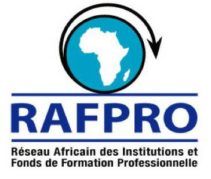Sharing experiences
Simplice BROU,
Responsible for the FDFP's House of the Apprentice in Côte d'Ivoire
"The problem of matching training to jobs is inherent to all countries. At the FDFP level, we have approached it differently. Given that the demands of the labor market are expressed by companies, we agreed that it is the companies, through the professional branches, consular chambers, the chamber of crafts that guide the world of work.
We have identified companies as essential actors in the definition of training curricula so that when we have to carry out training projects, the expression of their needs allows us to better address the training to young people so that these young people who are trained are inserted in these companies.
The other thing is the development of apprenticeship projects. We have developed these apprenticeship projects with companies so that today when a company has a recruitment need, it lets us know its specific needs.
The Fdfp, as a funding agency, will train these young people and make them available to the company.
Two advantages

Simplice BROU,
Responsible for the FDFP's House of the Apprentice in Côte d'Ivoire
Two key problems are solved with the adoption of this approach: the problem of lack of skilled labor but also the problem of youth unemployment by filling the labor gap with trained youth.
Not only are we working to better orient the apprenticeship component at the level of formally constituted companies, but also to develop it in favor of the informal, i.e. unstructured, world.
This is how we appear as a solution to the problem of training-job matching. It is an experience that we share and in this context, we have already received the Fund for the financing of vocational training in Niger, which came to learn from the apprenticeship system in Côte d'Ivoire. Soon, we will also receive the Fund from Burkina Faso, which wants to learn about the dual mode of training in order to propose solutions to youth unemployment.
Effects on youth integration
In terms of integration, we must be honest, there are always residues. In fact, the first conditions that the FDFP sets for the training of companies is a 100% insertion rate.
However, it so happens that some companies express their need for skilled labor that they do not have the possibility and capacity to use 100%. Therefore, we have mitigated this condition a little so that even if we are at an insertion rate of 60%, we think it is quite satisfactory because we also have the objective of improving the employability of these young people and allow them to be always attractive on the labor market. We think that it is quite satisfactory as long as we oscillate around an insertion rate of 60 to 65%.
I would like to point out here that all our countries are countries with a strong youth population. So, it would be important to occupy the young people by professional trainings so that they are not any more secular arms of all that is terrorist activity and of destabilization of their country.
C’est un appel à la formation des ressources humaines dans nos pays.
